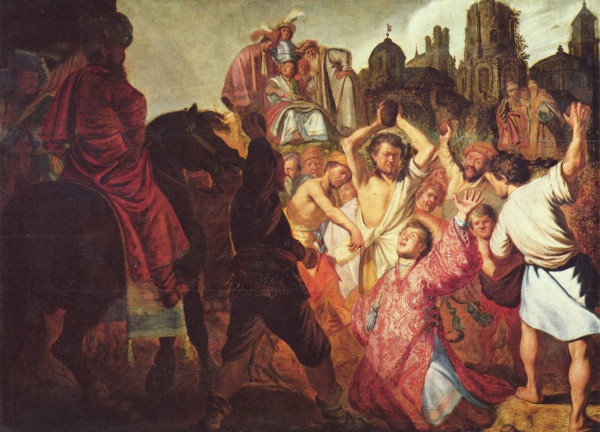Facts About The Stoning of Saint Stephen
"The Stoning of Saint Stephen" is an exceptional painting by the acclaimed Dutch artist Rembrandt. Completed in 1625, when Rembrandt was just 19 years old, this piece is significant as his first signed work. Today, this early masterpiece can be admired at the Musée des Beaux-Arts de Lyon.
The painting draws its inspiration from the martyrdom of Saint Stephen, as recounted in Acts 7 of the Bible. It captures the harrowing moment when the young deacon is being stoned to death outside Jerusalem by a crowd of about twenty people. In this intense scene, Rembrandt depicts Stephen uttering his final words to Christ, with a divine light symbolizing the heavens opening.
Rembrandt's composition is influenced by artists such as Caravaggio and Adam Elsheimer. The painting is aptly divided into two distinct zones by a diagonal line that creates a striking chiaroscuro effect. On one side, a man on horseback is shrouded in shadow, while on the other, Stephen and his attackers are illuminated. Among the crowd, Saul of Tarsus can be seen in the background, holding the coats of those throwing stones.
Interestingly, some minor inaccuracies in the drawing have been noted. For instance, it appears that Rembrandt might have included a self-portrait in the background. Art historian John Durham even suggests that Rembrandt depicted himself as a hesitant participant, perhaps reflecting on the tragic events unfolding before him.

 Andorra
Andorra